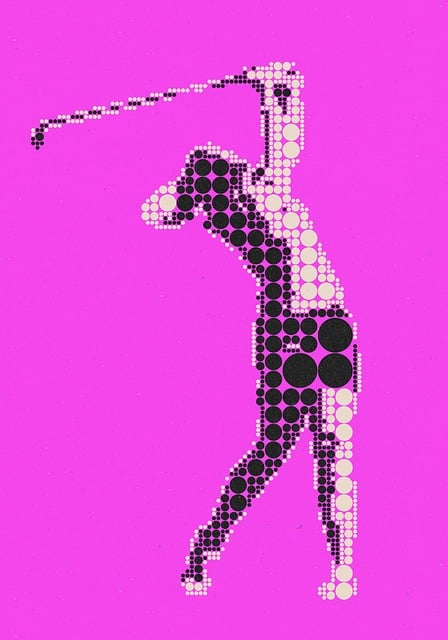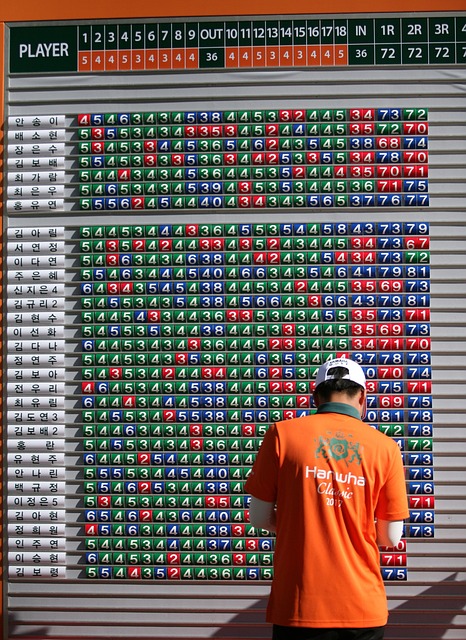Golf training techniques involve on-course practice for swing mechanics and mental toughness, plus off-course strength training, flexibility exercises, and technology-aided swing analysis. Media coverage has elevated the profile of the University of Oregon's Ducks men's golf team, showcasing their unique practices and contributing to global interest in college golf. Mental preparation, including visualization and positive self-talk, is crucial for navigating challenging courses and pressures. Physical conditioning blends core strengthening, flexibility exercises, and injury prevention strategies for enhanced performance over 18 holes. Team dynamics, enriched by diverse backgrounds, foster unity and collective skill refinement among professional golfers.
“In the world of competitive sports, media portrayal plays a pivotal role in shaping public perception. The University of Oregon’s Ducks men’s golf team, with its burgeoning popularity, has become a subject of intense interest for sports enthusiasts and analysts alike. This article delves into ‘Golf Training Techniques’ both on and off the course, exploring the strategies that have propelled the Ducks to prominence. From mental game strategies to physical conditioning, we uncover the multifaceted approach that has united the team for outstanding success in golf.”
- Golf Training Techniques: On and Off the Course
- Media Portrayal: Ducks Men's Golf in Spotlight
- Building Confidence: Mental Game Strategies
- Physical Conditioning: Enhancing Performance
- Team Dynamics: Uniting for Success in Golf
Golf Training Techniques: On and Off the Course

Golf training techniques extend far beyond simply hitting balls on the course. Effective preparation for competitive golf involves a multifaceted approach, with methods both on and off the green. On-course practice focuses on refining swing mechanics, course management strategies, and mental toughness. Golfers can enhance their performance by setting up shots optimally, selecting appropriate clubs, and mastering short game techniques like putting and chipping.
Off the course, golf training techniques include strength and conditioning programs to build core stability, flexibility, and explosive power. Players also incorporate drills that mimic on-course scenarios to develop consistency and adaptability. Regular analysis of swing data through technology like motion sensors helps golfers identify areas for improvement. Additionally, mental preparation techniques such as visualization and positive self-talk contribute to peak psychological condition, enabling athletes to perform at their best during tournaments.
Media Portrayal: Ducks Men's Golf in Spotlight

The media plays a significant role in shaping public perception, and when it comes to University of Oregon’s Ducks men’s golf team, their spotlight has been intense. Recent years have seen an increased focus on not just the team’s performance but also their unique golf training techniques. This shift in coverage has not only elevated the visibility of college golf but also brought attention to the dedication and skill required at this level.
Through in-depth interviews, feature articles, and highlight reels, media outlets have showcased the Ducks’ innovative practice routines, mental preparation strategies, and the intricate analysis of their swings. These stories often emphasize the team’s ability to blend traditional golf skills with modern training methods, setting them apart from other collegiate programs. The comprehensive coverage has not only inspired fellow athletes but also caught the interest of aspiring golfers worldwide, further enriching the sport’s landscape.
Building Confidence: Mental Game Strategies

The media’s portrayal of Ducks men’s golf often highlights the physical aspects of the game, but a significant aspect that deserves attention is the mental game and the strategies employed to build confidence among players. Golf training techniques extend beyond swinging a club; they encompass a range of mental exercises designed to sharpen focus and resilience. Athletes in this sport must navigate challenging courses, competitive pressures, and their own internal dialogue.
Building confidence involves various mental conditioning tactics, such as visualization, positive self-talk, and stress management. Visualizing successful shots and outcomes can boost an athlete’s belief in their abilities. Encouraging players to replace negative thoughts with affirmations can significantly impact their performance during crucial moments on the course. Golfers who master these mental skills often find themselves better equipped to handle pressure situations, ultimately leading to improved scores and a more consistent game.
Physical Conditioning: Enhancing Performance

Golf, like any sport, demands a certain level of physical fitness and conditioning for optimal performance. For college golf teams, such as the Ducks men’s golf team, staying in top shape is not just about aesthetics; it directly translates into improved swing speed, endurance, and overall athletic ability on the course. The athletes undergo rigorous training regimens that incorporate a blend of strength and flexibility exercises tailored to golfers.
Golf training techniques vary but often include core strengthening workouts to improve balance and stability during swings. Dynamic stretching before play and static stretching post-play are essential for muscle recovery and injury prevention. Many professional golfers also integrate yoga or pilates into their routines to enhance flexibility and mental focus, which can significantly impact a player’s performance consistency over an 18-hole course.
Team Dynamics: Uniting for Success in Golf

In the world of professional sports, team dynamics play a pivotal role in achieving success, and golf is no exception. When it comes to the Ducks men’s golf team, their unity and collective spirit are often cited as key factors behind their on-course performance. Effective communication, mutual respect, and shared goals foster an environment conducive to learning and improvement.
The diverse backgrounds of each golfer contribute to a rich tapestry of experiences and perspectives, enhancing the team’s overall strength. Through collaborative practices and innovative golf training techniques, they refine their skills collectively, transforming individual talents into a formidable force. This cohesive unit approach not only improves individual players but elevates the entire team’s performance on the global stage.






